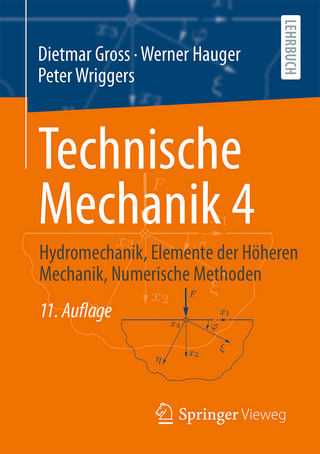
Advanced Dynamics of Rolling Elements
Springer-Verlag New York Inc.
978-1-4612-9767-3 (ISBN)
1. Introduction.- 1.1 Rolling Bearing Elements and Basic Interactions.- 1.2 Types of Analytical Models.- 1.3 Nomenclature.- 1.4 Summary.- 2. Equations of Motion and Coordinate Transformations.- 2.1 Coordinate Frames and Transformations.- 2.2 Equations of Motion.- 2.3 Moving Coordinate Frames.- 2.4 General Motion Simulation.- 2.5 Summary.- 3. Geometric Interactions in Rolling Bearings.- 3.1 Rolling Element/Race Interactions.- 3.2 Rolling Element/Cage Interactions.- 3.3 Race/Cage Interactions.- 3.4 Interactions Between Rolling Elements.- 3.5 External System Interactions and Constraints.- 3.6 Summary.- 4. Elastohydrodynamic Lubrication.- 4.1 General Consideration in Lubricant Traction Modeling.- 4.2 An E1astohydrodynamic Traction Model.- 4.3 Traction Behavior of Some Lubricants.- 4.4 Summary.- 5. Churning and Drag Losses.- 5.l Estimation of Drag Forces.- 5.2 Estimation of Churning Moments.- 5.3 Effective Lubricant Viscosity and Density.- 5.4 Summary.- 6. Numerical Integration of the Equations of Motion.- 6.1 Dimensional Organization.- 6.2 Explicit Algorithms.- 6.3 Implicit Algorithms.- 6.4 Selection of a Method.- 6.5 External Constraints.- 6.6 Summary.- 7. The Computer Program ADORE.- 7.1 Program Overview.- 7.2 Structure of ADORE.- 7.3 ADORE Capabilities.- 7.4 Input/Output Data.- 7.5 Computer Resource Requirement.- 7.6 Summary.- 8. Some Dynamic Performance Simulations.- 8.1 Numerical Considerations.- 8.2 Vibrational Characteristics.- 8.3 General Ball Motion and Skid.- 8.4 Cage Stability.- 8.5 Roller and Cage Motion in Cylindrical Roller Bearings.- 8.6 Summary.- 9. Experimental Validation of ADORE.- 9.1 Ball Motion and Skid.- 9.2 Cage Motion.- 9.3 Summary.- 10. Guidelines for Rolling Bearing Design.- 10.1 System Overview.- 10.2 Rotor-Bearing System Interaction.- 10.3 ADORE:A Design and Performance Diagnosis Tool.- 10.4 Summary.- Appendix I: Hertz Point-Contact Solutions.- Appendix II: Shrink Fit and Thermal Expansion of Races.- Appendix III: Fatigue Life Computation.- Appendix IV: Source Listing of ADORE.- Appendix V: Typical Example.- References.- Author Index.
| Zusatzinfo | XIV, 296 p. |
|---|---|
| Verlagsort | New York, NY |
| Sprache | englisch |
| Maße | 155 x 235 mm |
| Themenwelt | Naturwissenschaften ► Physik / Astronomie ► Mechanik |
| Technik ► Fahrzeugbau / Schiffbau | |
| Technik ► Maschinenbau | |
| Schlagworte | Dynamics • Elements |
| ISBN-10 | 1-4612-9767-2 / 1461297672 |
| ISBN-13 | 978-1-4612-9767-3 / 9781461297673 |
| Zustand | Neuware |
| Informationen gemäß Produktsicherheitsverordnung (GPSR) | |
| Haben Sie eine Frage zum Produkt? |
aus dem Bereich


